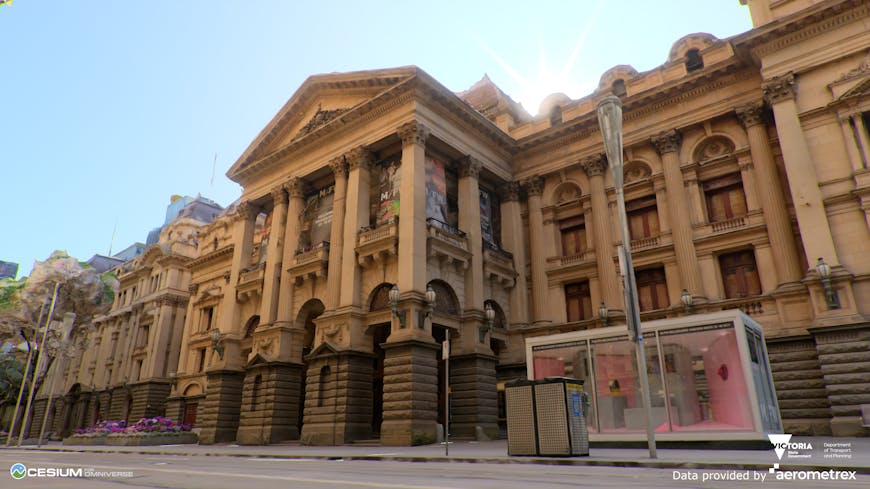Cesium Releases in May 2023
CesiumJS 1.105 Release
CesiumJS 1.105 is now available. We’ve added ArcGisMapServerImagery.fromBasemapType, and ArcGisBaseMapType, and ArcGisMapService for ease of use with the latest ArcGIS Imagery API. (#11098)
Other highlights of the release include:
- Fixed Repeated URI parsing slows 3D Tiles performance #11197. Together with #11211, this can reduce tile parsing time by as much as 25% on large tilesets.
- Added
Viewer.creditDisplayandCesiumWidget.creditDisplayto access the onscreen and lightbox credits. #11241 - Added
CreditDisplay.addStaticCreditandCreditDisplay.removeStaticCreditsuch thatCredit.showOnScreenvalue is taken into account. #6215 - Added
options.gltfCallbacktoModel.loadGltfAsyncto allow apps to access the loaded glTF JSON. #11240
For more details, see the changelog. You can subscribe to the Cesium release roundup thread on the community forum to get notifications about our monthly releases.

Mount Rainier, Washington, USA, in CesiumJS with ArcGIS World Hillshade imagery and Cesium World Terrain.
Cesium for Unreal 1.25.0 Release
Starting with this release, Cesium for Unreal requires Unreal Engine v5.0 or later. There will be no more releases for Unreal Engine v4.27.
Some changes in this release include:
- On-screen credits now only show on the screen, and not in the Data Attribution panel. Additionally, the Data Attribution panel no longer appears if there are no credits to display in it.
- Updates from Cesium Native, including support for implicit tiling in the 3D Tiles 1.1 specification. Read more in the Cesium Native changelog.
Check the Cesium for Unreal (UE5) release and the Cesium for Unreal Samples release for the full list of updates.
Cesium for Unity 1.1.0 Release
As of this update, CesiumObjectPool is no longer accessible from outside the CesiumRuntime assembly.
Other highlights include:
- Added support for primitives with the
TRIANGLE_STRIPandTRIANGLE_FANtopology types. - Missing normals are now generated as "flat" normals by default, as required by the glTF specification. An option on
Cesium3DTilesetallows the user to request smooth normals instead, which will improve performance for most meshes by reducing geometry duplication. - Moved mipmap generation from the main thread to a worker thread, which improves the performance of textured datasets.
- Added dependencies on the ShaderGraph and InputSystem packages to resolve material / script compilation errors.
- Fixed another bug where
CesiumCameraControllertried to access a non-existent input in the legacy input system. - Removed an extra "delimiter" added to the end of on-screen credits in some cases.
- Fixed a memory leak of
Meshobjects when entering and exiting Play mode in the Unity Editor. - Fixed a crash that happened when attempting to create physics meshes for degenerate triangle meshes.
Check the changelog for the full list of updates, and follow our Cesium for Unity tutorials to get started.
Cesium for Omniverse 0.5.0 Release
Highlights of this release include:
- Added material pool for better performance and to reduce texture/material loading artifacts.
- Added support for multiple viewports.
- Fixed red flashes when materials are loading.
- Fixed cyan flashes when textures are loading.
- Fixed adding imagery as base layer for existing tileset.
- Fixed Fabric types for
tilesetIdandtileId. - Upgraded to cesium-native v0.23.0.
Peruse the changelog for the full list of updates, and get started with our Cesium for Omniverse tutorials.

Melbourne Town Hall in Cesium for Omniverse.

